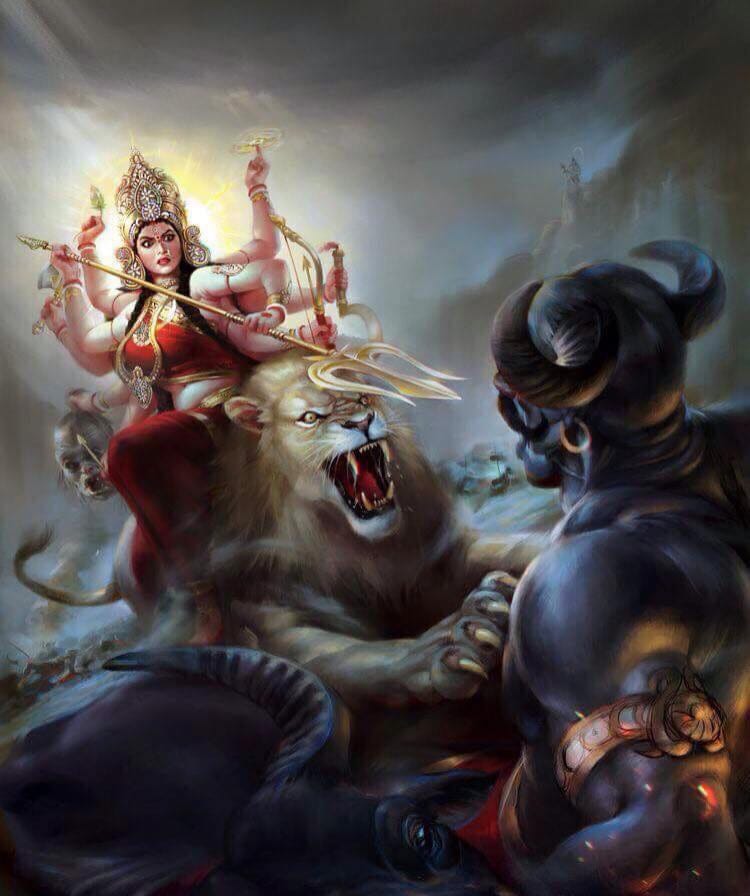The Devi Mahatmyam, a revered Sanskrit text, tells the timeless story of the battle between good and evil. In this tale, the Divine Mother, manifesting as Goddess Durga, triumphs over the ruthless demon Mahishasur, who sought to control the three worlds. This story is celebrated every year during Navratri, reminding us of the divine power that resides in the protective and compassionate form of Goddess Durga.
The Tale of Mahishasur
Long ago, a powerful demon king named Rambha fell in love with a beautiful buffalo, and from this union, a child was born—Mahishasur. Half-buffalo and half-human, Mahishasur was unlike any other being. As he grew, his strength and ambition knew no bounds. His heart was consumed by a desire to conquer the three worlds and become the most powerful being.
To achieve his dream, Mahishasur turned to severe penance. For years, he stood on one foot, meditating with no food or water, all in the hopes of pleasing Lord Brahma, the creator of the universe. His efforts paid off. Brahma, impressed with his devotion, appeared before him and offered to grant him a boon. Driven by arrogance, Mahishasur asked for immortality, wanting to become unbeatable. But Brahma, ever the wise god, explained that no one, not even gods or demons, could escape death—it is the natural law of the universe. Undeterred, Mahishasur requested another boon. He asked that no god, demon, or magical being be able to kill him. If death were ever to come to him, it should be at the hands of a woman—a request that stemmed from his belief that no woman could ever match his strength.
Lord Brahma granted this wish, and with this boon, Mahishasur’s ego swelled. Armed with this sense of invulnerability, Mahishasur launched an all-out war on the devatas. His conquest to defeat the devatas and insatiable hunger for power spread his tyranny everywhere. Indra, the king of the celestial abodes, was dethroned, and the devatas were driven out of their celestial homes. There was no one left to challenge his reign. Or so he thought.
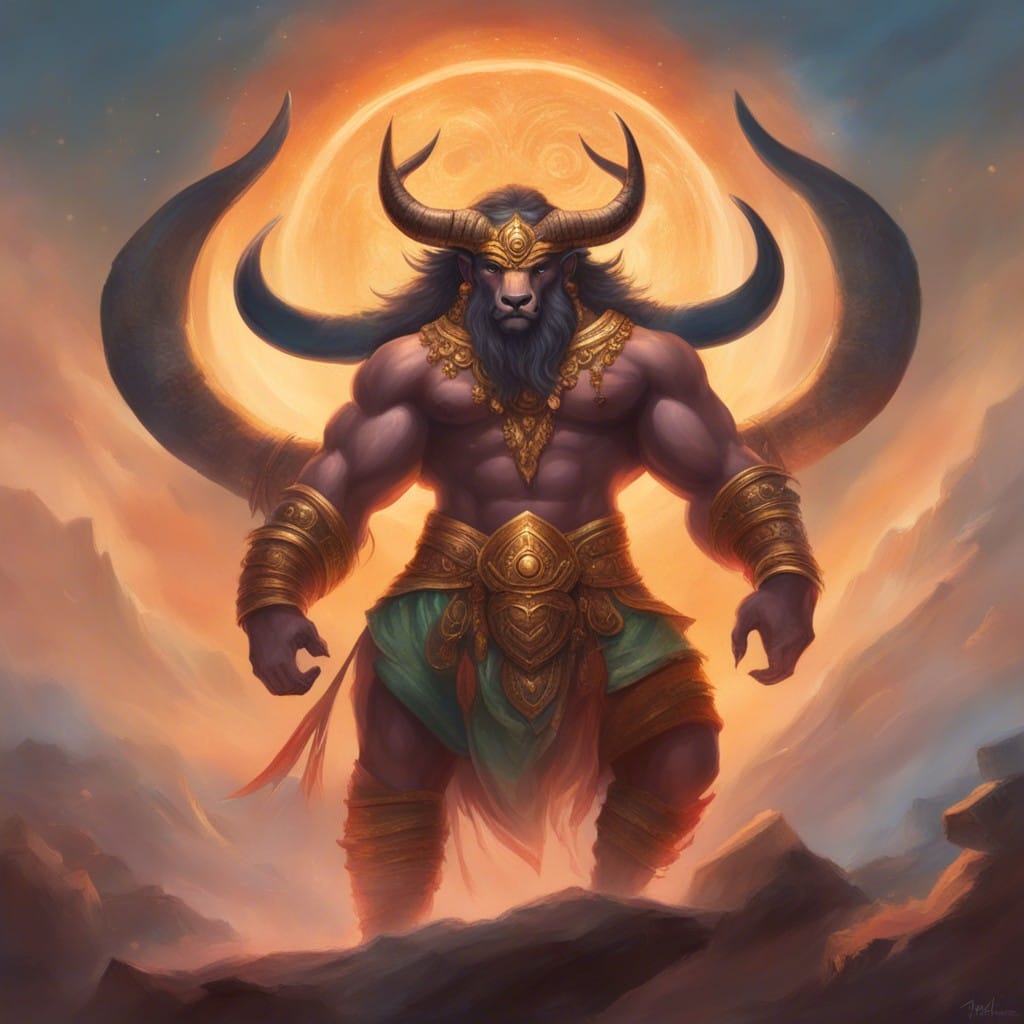

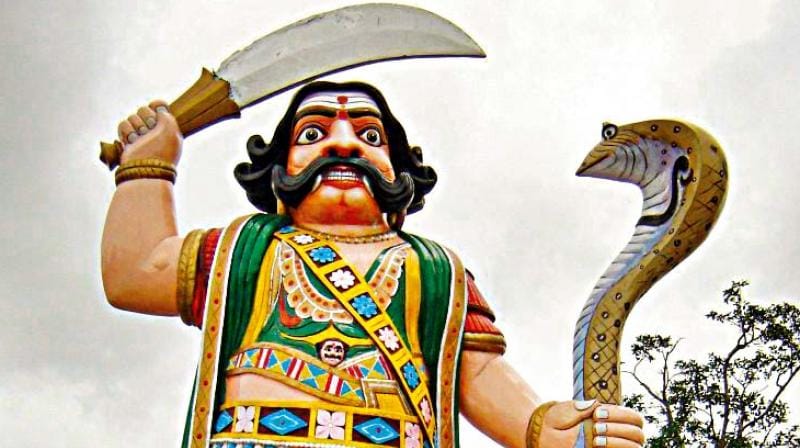
Mahishasur was born from the union of a demon king and a buffalo
Goddess Durga is Invoked:
The devatas, defeated and desperate, turned to the Divine Trinity—Brahma, Vishnu, and Shiva—for help. Recognizing that Mahishasur could only be defeated by a woman, the Gods decided to combine their divine energies to create a supreme female warrior. From this collective power, a radiant light emerged, and from that light, Goddess Durga was born.
Durga, the divine mother, represents the ultimate form of Shakti—the feminine energy of the universe. She is both nurturing and fierce, compassionate and powerful. Her beauty was breathtaking, but her strength was unparalleled. As she emerged, each god offered her a weapon, ensuring that she was armed with the best weapons to take on Mahishasur.
- Lord Shiv gifted her the Trishul (Trident), symbolizing the control over creation, preservation, and destruction, as well as the balance of purity, activity, and inertia.
- Lord Vishnu gave her the Chakra (Discus), representing the cosmic cycle of time and the eternal order of the universe.
- Lord Ganesh presented her with a Sword, symbolizing wisdom and the ability to discern right from wrong.
- Indra offered her the Vajra (Thunderbolt), representing indomitable will and unbreakable resolve.
- Vayu, the god of wind, provided her with Bows and Arrows, symbolizing precision and focus in overcoming obstacles.
- Agni, the god of fire, gave her a Spear, representing fiery power and determination.
- Varun, the god of water, gifted her the Shankha (Conch), signifying the primordial sound "AUM" and the divine call to wake up from material slumber.
- Brahma handed her a Lotus, symbolizing the blossoming of spiritual consciousness through knowledge.
With these divine gifts in her hands and a lion as her vehicle, Goddess Durga set off to face Mahishasur. Her form radiated divine light and power, shaking the mountains and stirring the oceans. Even the mighty Mahishasur trembled when he first saw her, though his arrogance quickly took over.

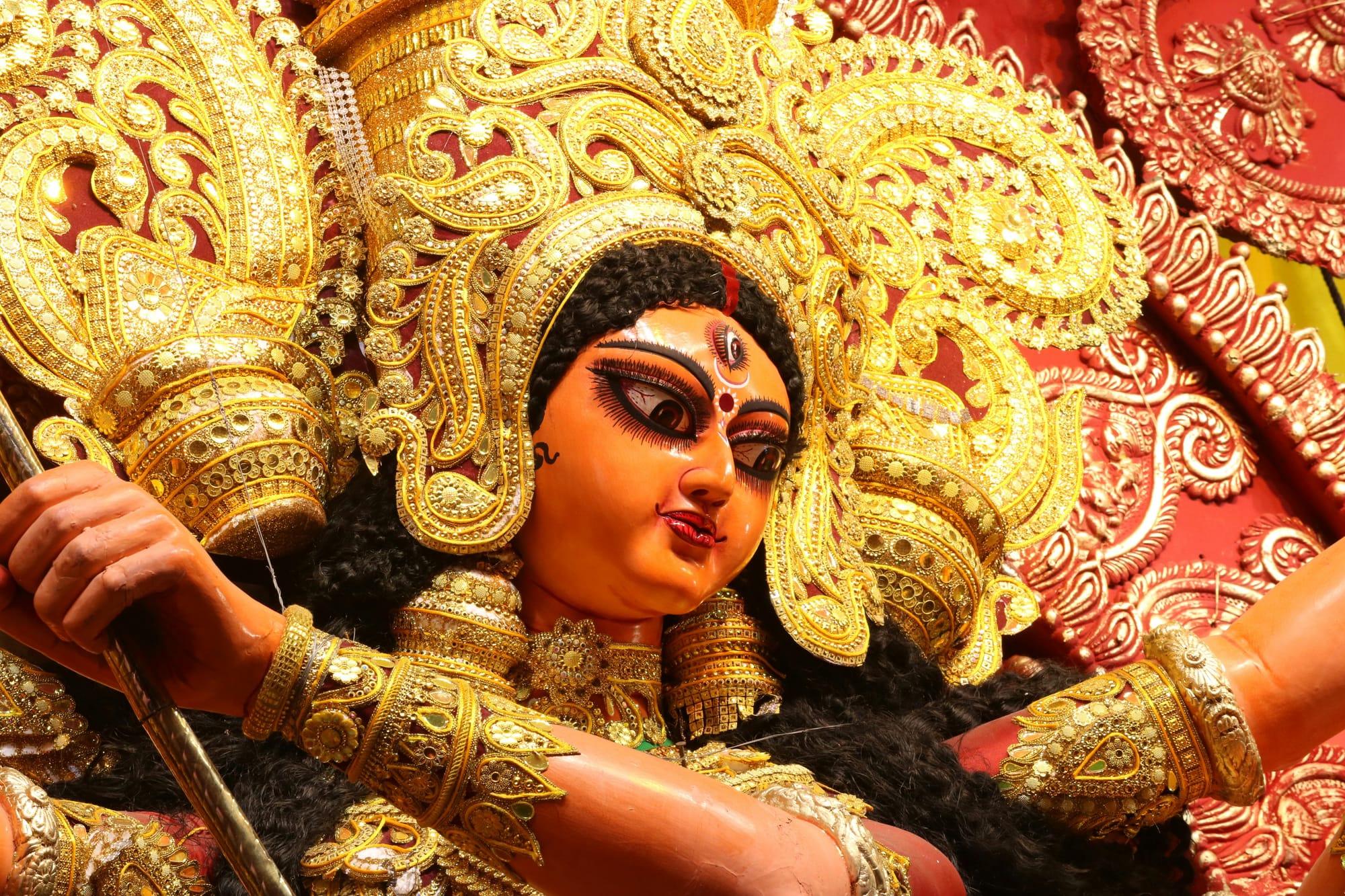
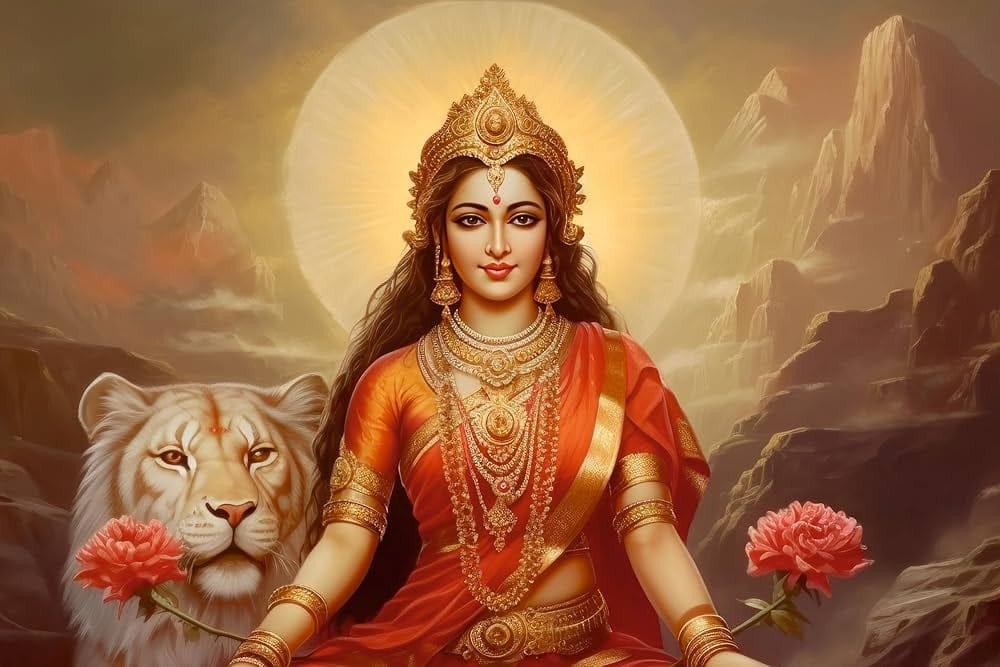
Goddess Durga, the divine mother, is a form of God's divine Yogmaya power
The Epic Battle:
What followed was a battle that shook the celestial abodes. Mahishasura, confident that no woman could ever defeat him, sent his vast army of demons to face Goddess Durga. Among them were demons like Chiksur, Asiloma, Vidalaksha, and Mahahanu. But Durga, armed with the blessings and weapons of the Gods, took on the entire demon army with unmatched strength.
For nine long days, the battle raged. Mahishasur, desperate to win, transformed into various forms—a lion, an elephant, and even a ferocious serpent—in an attempt to overpower the Goddess. She took on different divine forms, known as the Nav Durgas, each day, her strength growing with each new avatar.
On the tenth day, Mahishasur, in his final attempt, reverted to his buffalo form. But this time, Durga pinned him to the ground and, with her Trishul, pierced him, bringing an end to his reign of terror. With this, good triumphed over evil, and peace was restored to the universe.
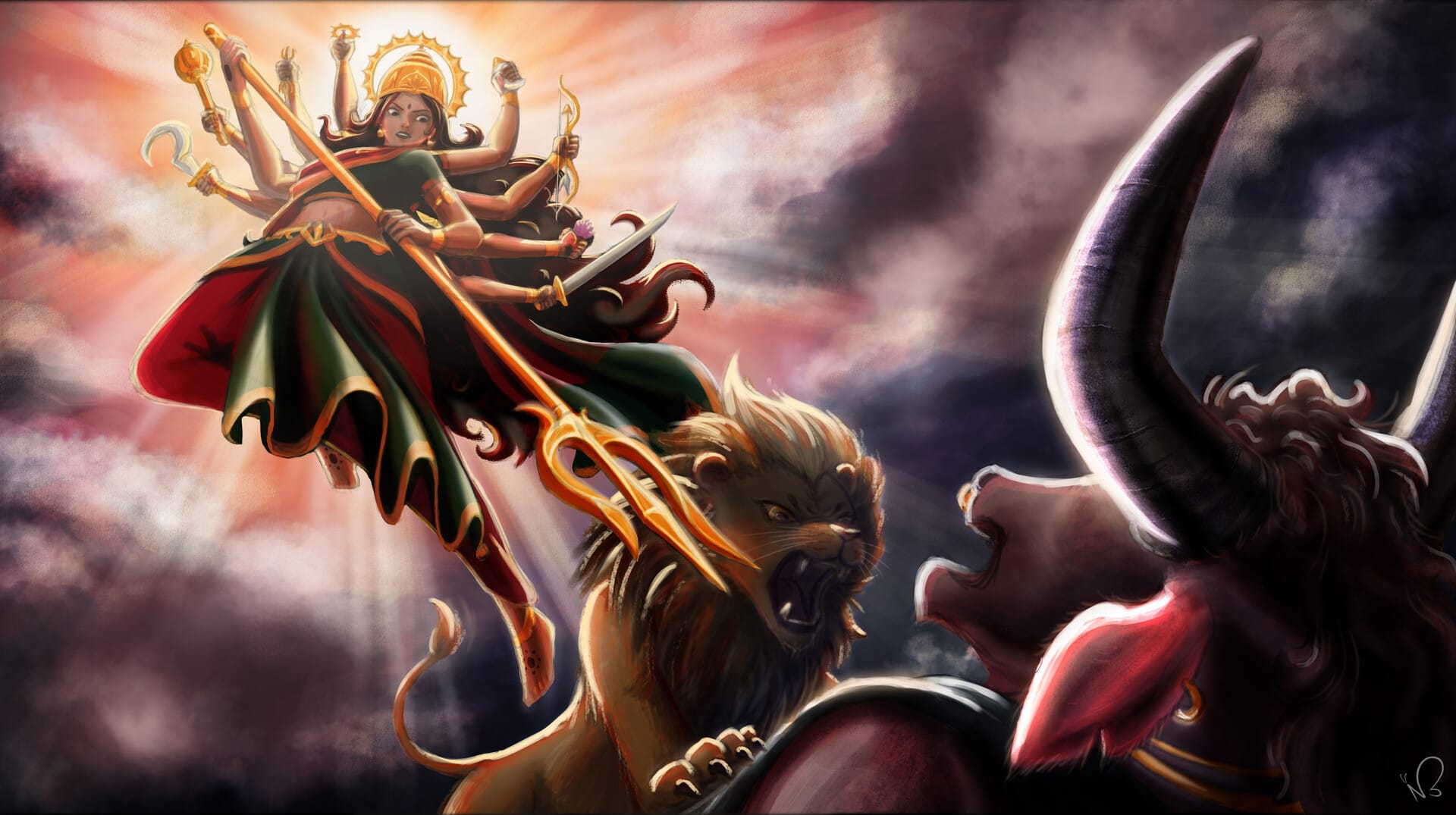
Mahishasur was defeated on the tenth day of the battle
Glories of Goddess Durga:
Goddess Durga’s victory over Mahishasur symbolizes more than just a battle of strength. It represents the eternal truth that good always triumphs over evil, that light always overcomes darkness, and that divine power will always protect the righteous. Her story reminds us of the importance of standing up for justice, even in the face of seemingly unbeatable odds.
Devotees glorify Goddess Durga in many ways. The Durga Chalisa, a 40-verse hymn, praises her strength, wisdom, and protection. Ancient texts like the Devi Mahatmya and Devi Bhagavata Purana revere her as the primordial creator of the universe. In other scriptures, Durga is associated with Lakshmi, the goddess of wealth and prosperity, further highlighting her nurturing and protective nature.
Goddess Durga appears in other significant Hindu texts, such as the Mahabharat and Ramayan. In the Mahabharat, the Pandavas prayed to Durga for her blessings during their time in exile. In the Ramayan, Lord Ram worshipped Durga before his final battle with Ravan, seeking her grace and strength to overcome his adversary.
Durga is known an avatar of Yogmaya, the divine energy of God. Her divine intervention in the birth of Lord Krishna is a testament to her role as protector and nurturer of the universe. When Kansa attempted to kill Devaki’s child, it was Durga who ensured the safe transfer of the child to Rohini, thus protecting the future slayer of Kansa.
Celebrating Goddess Durga:
Goddess Durga’s victory over Mahishasur is celebrated across India through several festivals, each honoring her divine power and compassion.
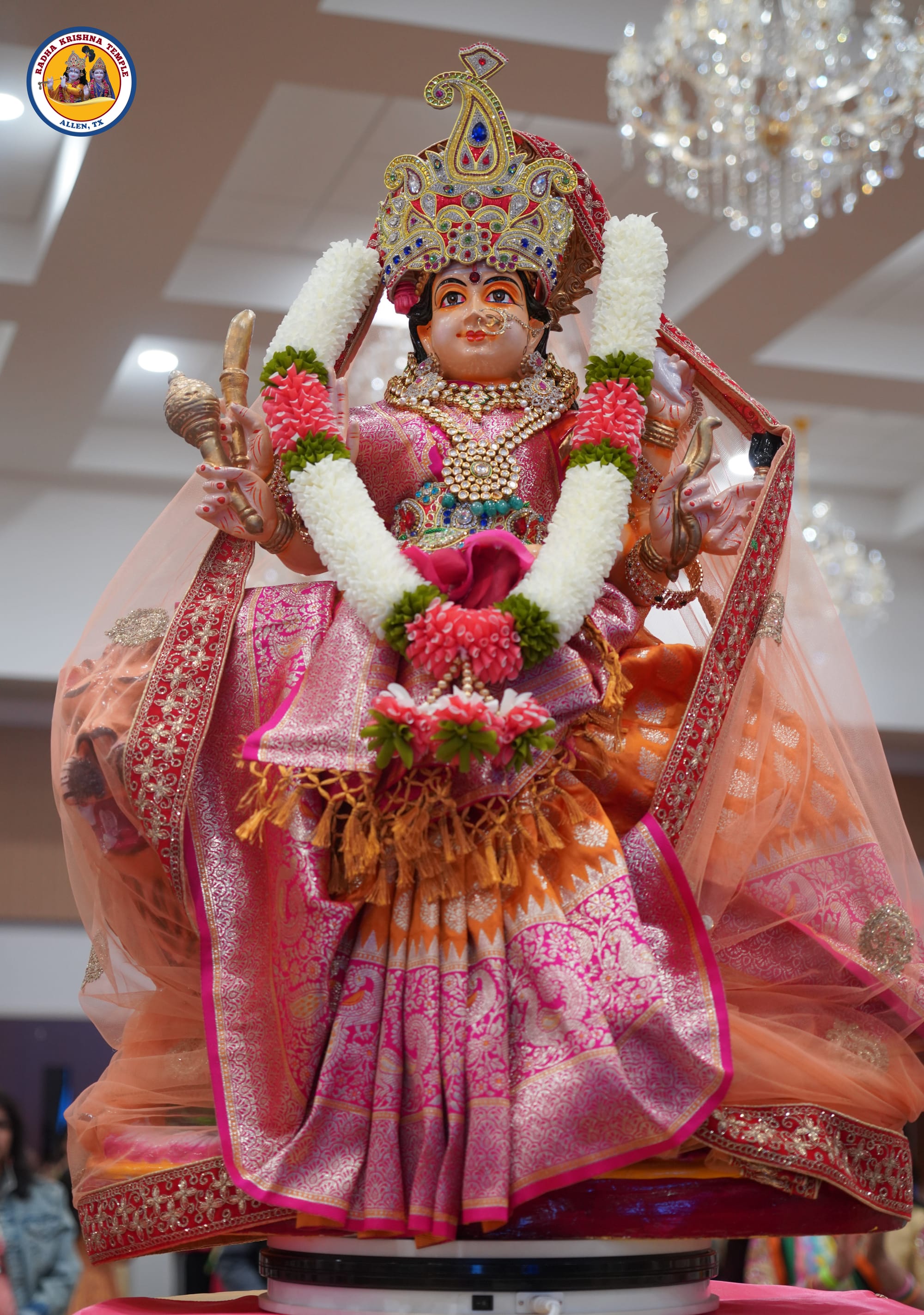
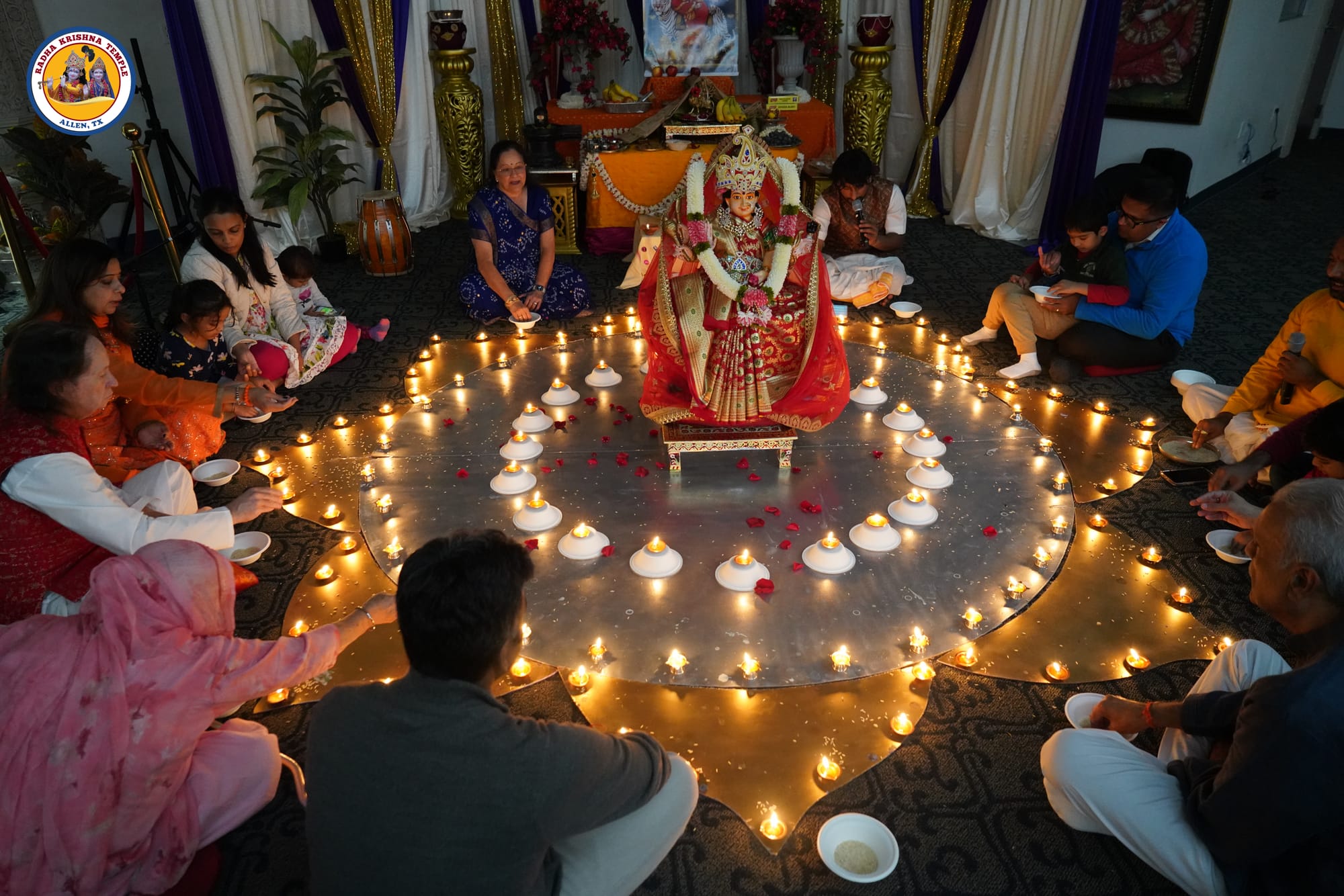
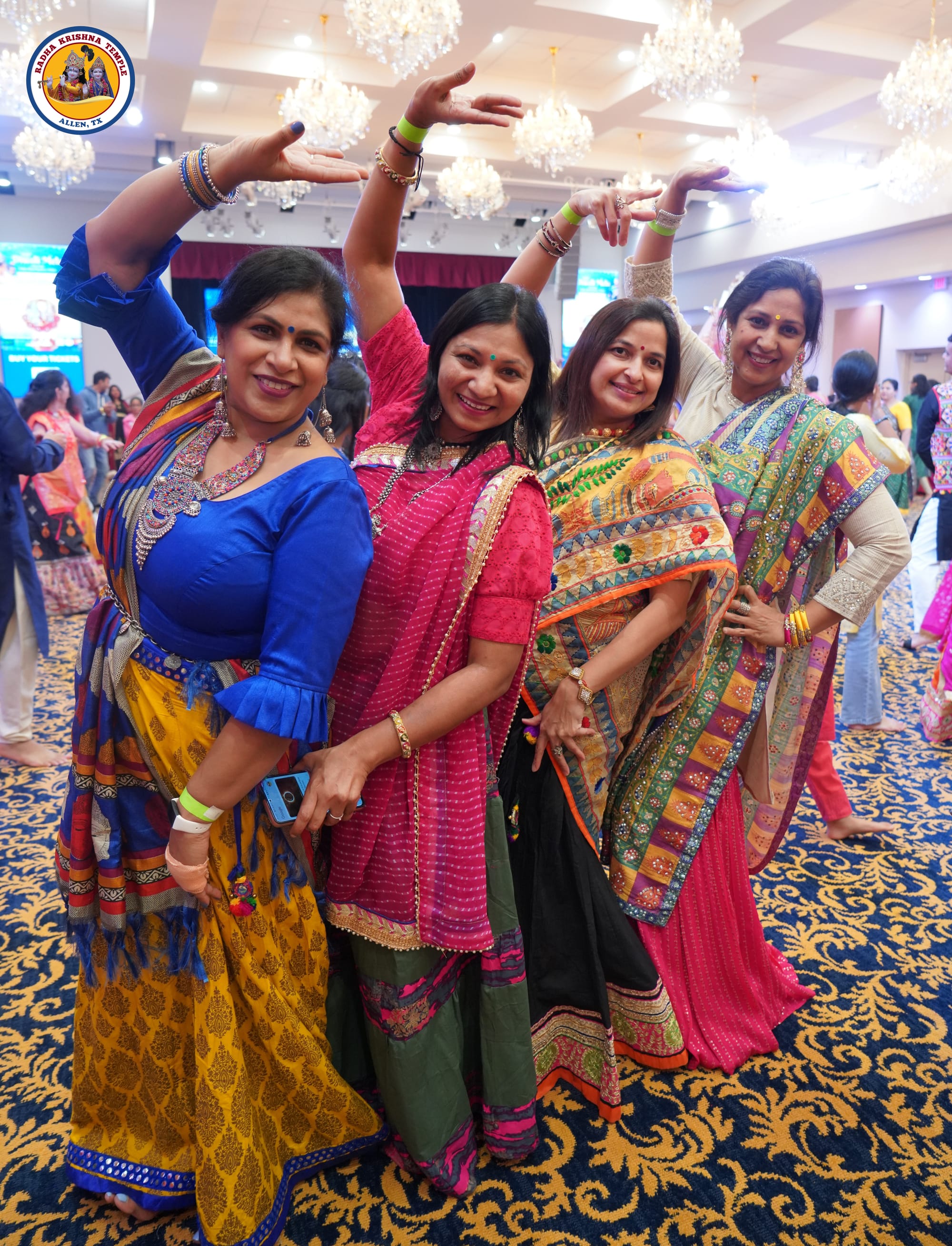
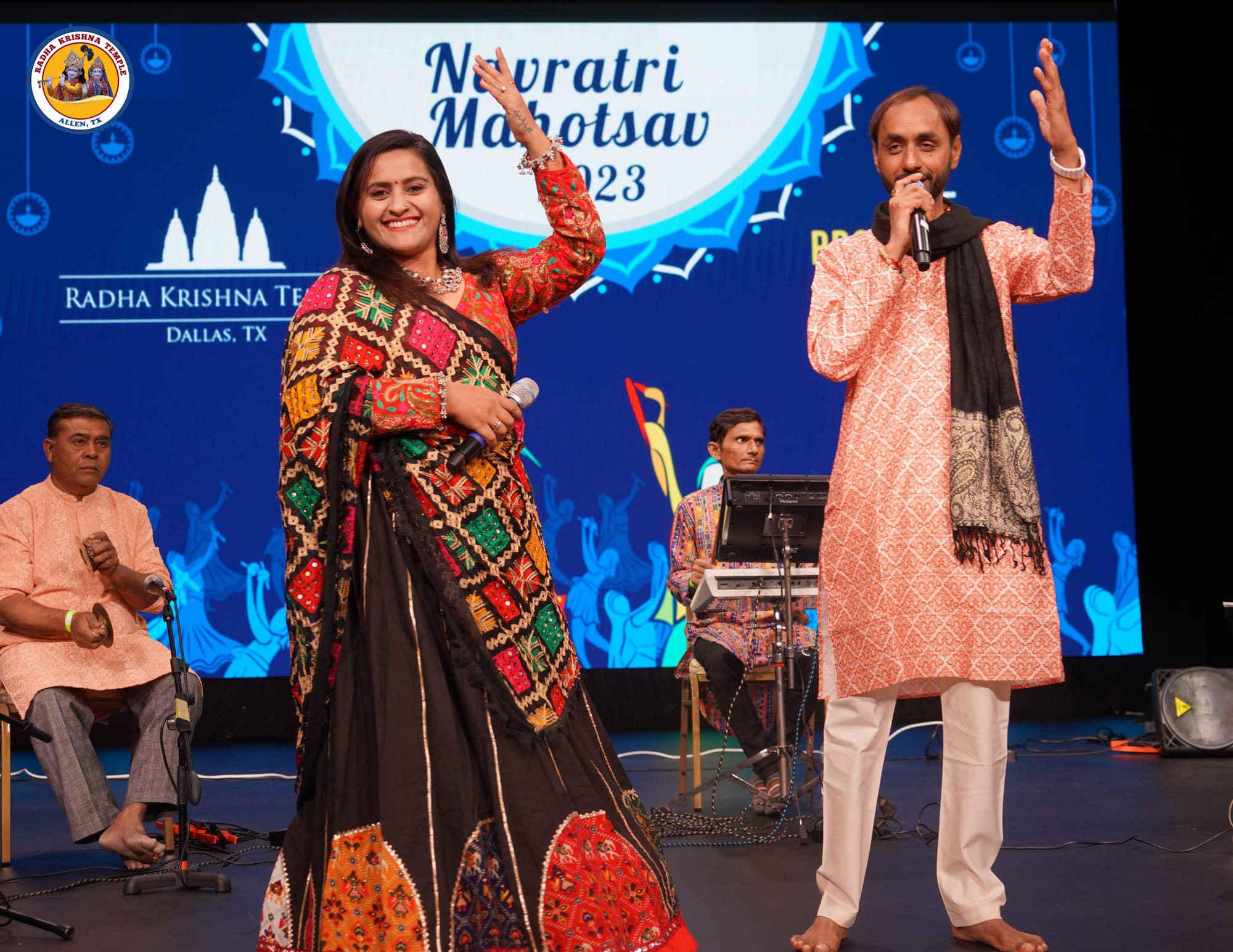
Navratri Celebrations at Radha Krishna Temple of Dallas
- Navratri: A nine-day festival celebrated with prayers, fasting, and devotional dances like Garba and Dandiya, each day dedicated to one of Durga’s forms.
- Durga Puja: Particularly popular in West Bengal, Odisha, and Assam, this festival celebrates Durga’s victory over Mahishasur with grand processions, beautifully decorated pandals, and cultural performances. The festival culminates with the Visarjan, where idols of Durga are immersed in water, symbolizing her return to her abode.
- Vijayadashami/Dussehra: The tenth day of Navratri, marking Durga’s victory, is celebrated as Vijayadashami across India, where effigies of demons like Ravan are burned, symbolizing the destruction of evil.
- Mahalaya: This prelude to Durga Puja marks the Goddess's descent to Earth, celebrated with early morning prayers and the recitation of the Chandi Path.
- Ghatsthapana: A significant ritual during Navratri, where a sacred pot is worshipped as a symbol of Durga’s energy, marking the beginning of the festivities.
These festivals not only celebrate the divine strength of Goddess Durga but also reflect the deep spiritual significance of her triumph. Each region brings its unique flavor to the celebrations, making them vibrant and deeply immersive for devotees.
Through her story, Goddess Durga reminds us that no matter how dark times may seem, there is always a force of good, compassion, and strength watching over us. Her presence gives us the courage to face life’s challenges and the confidence that justice will always prevail. Every prayer, every song, and every ritual devoted to her is a reminder of this eternal truth.
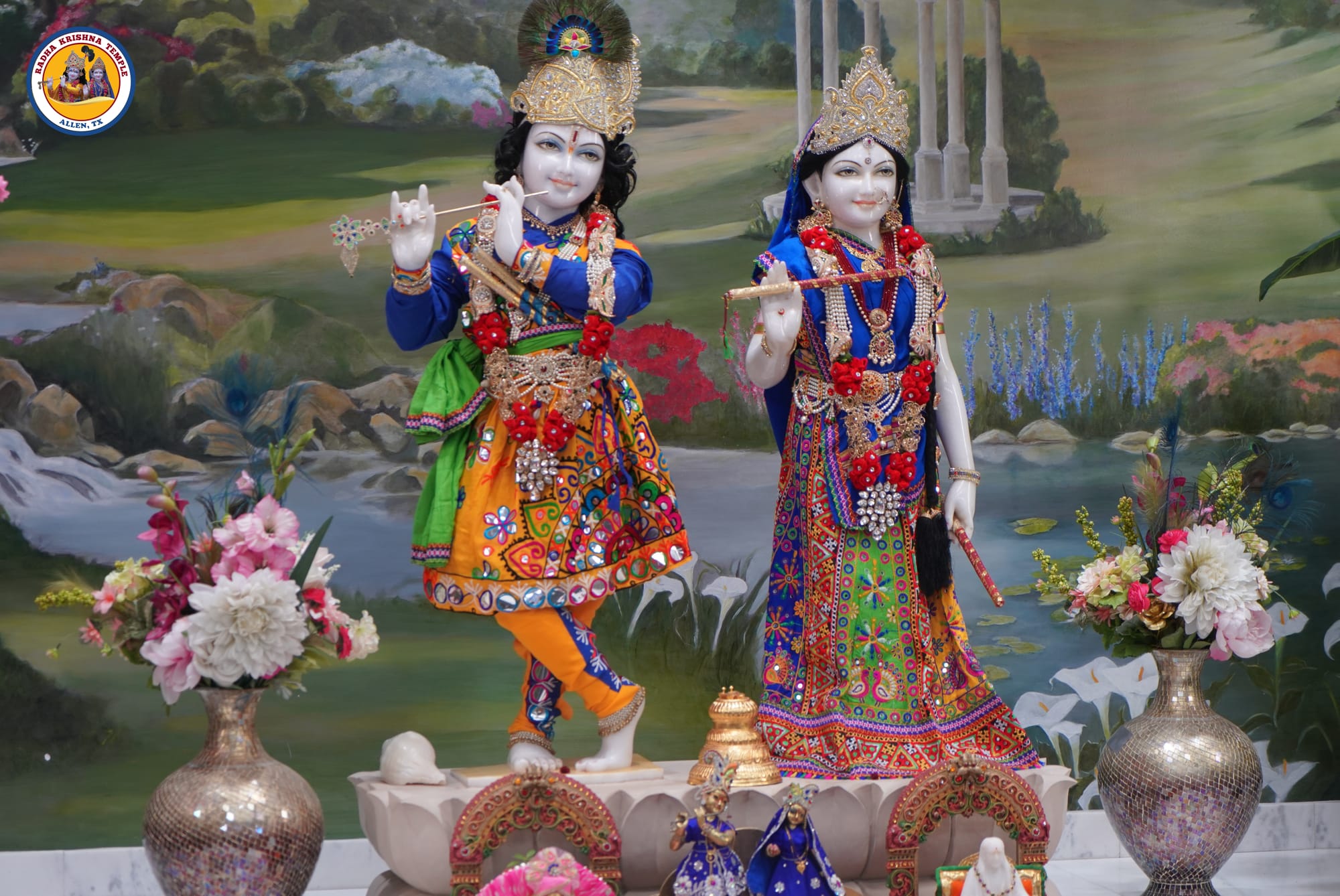
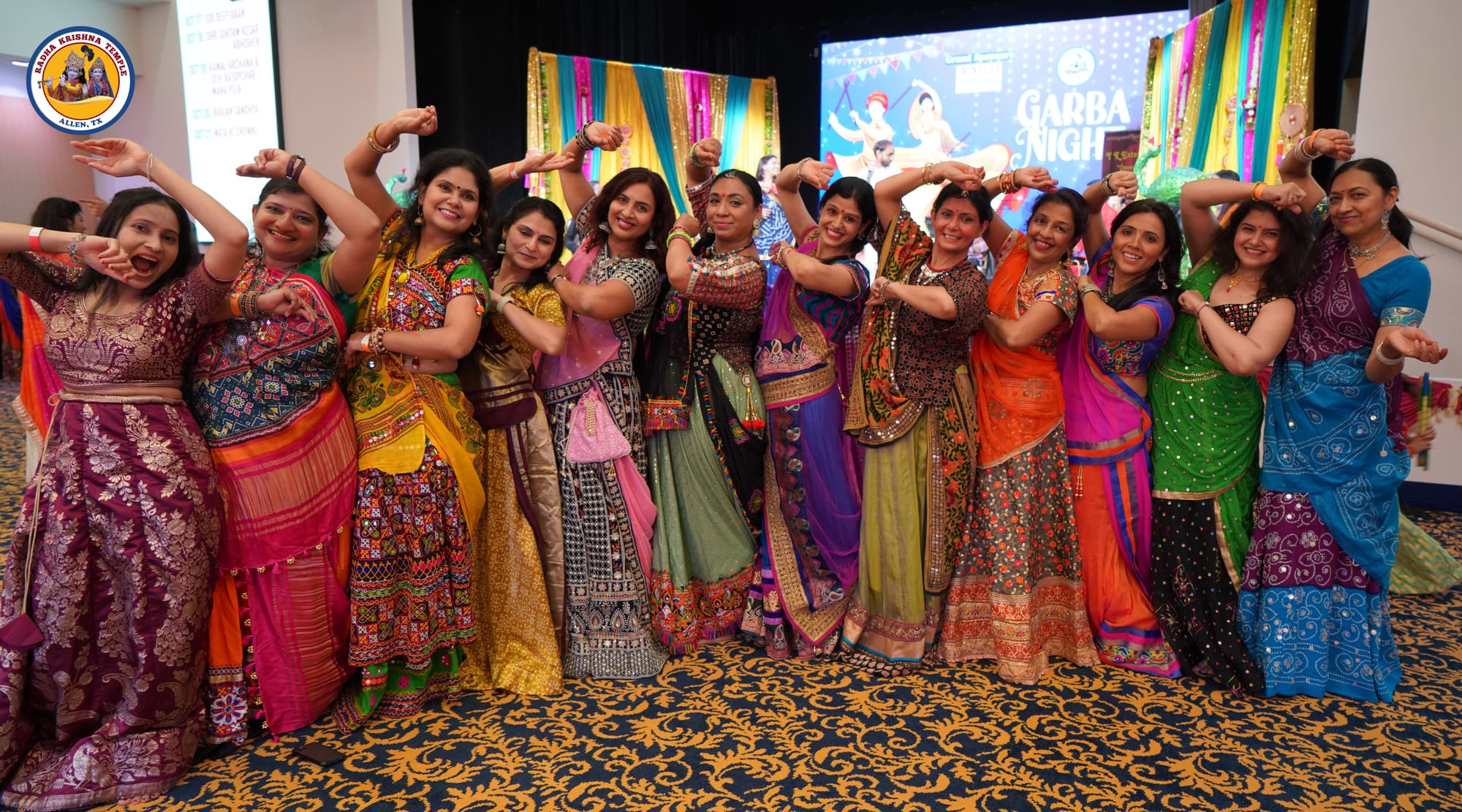
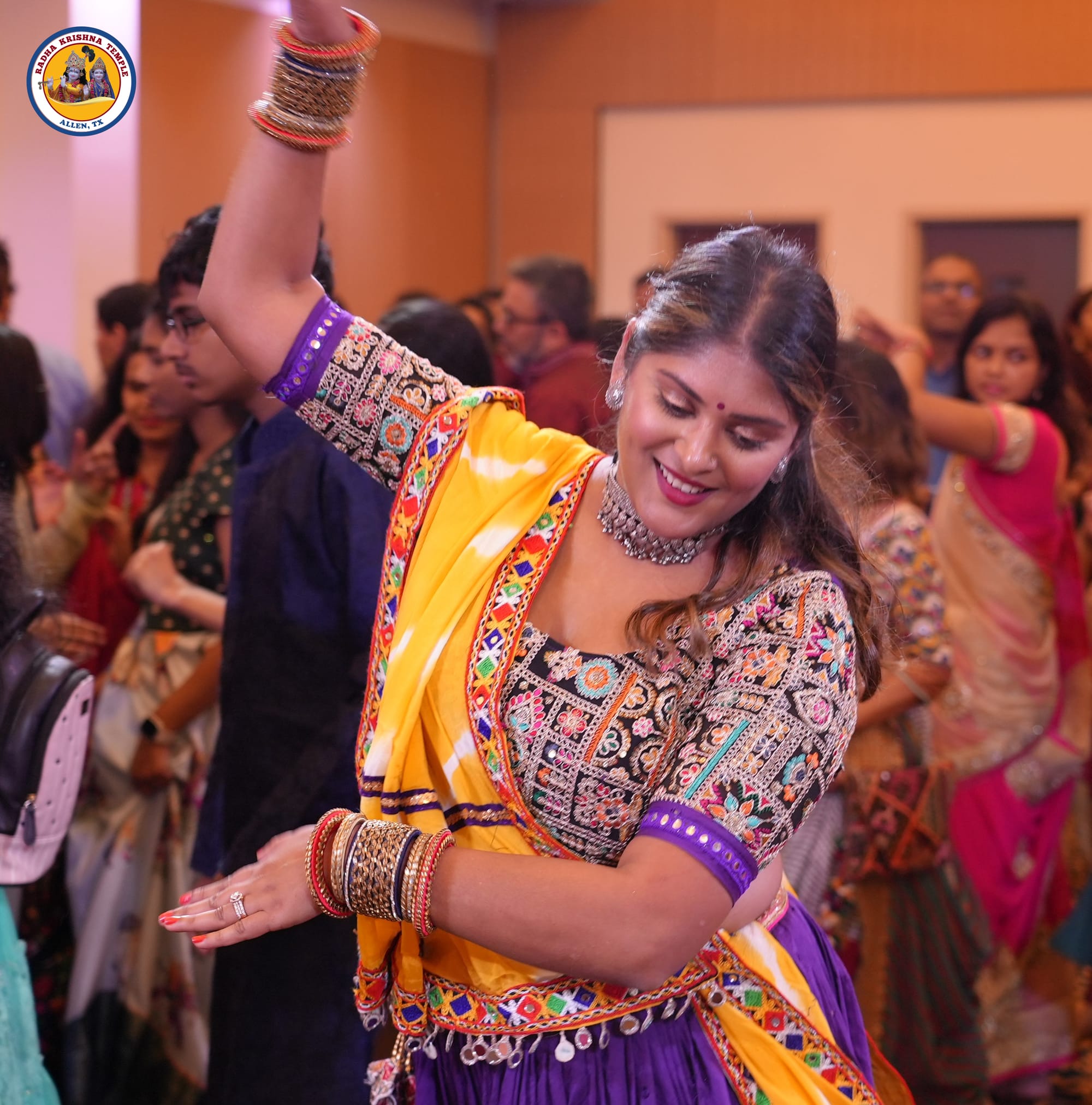
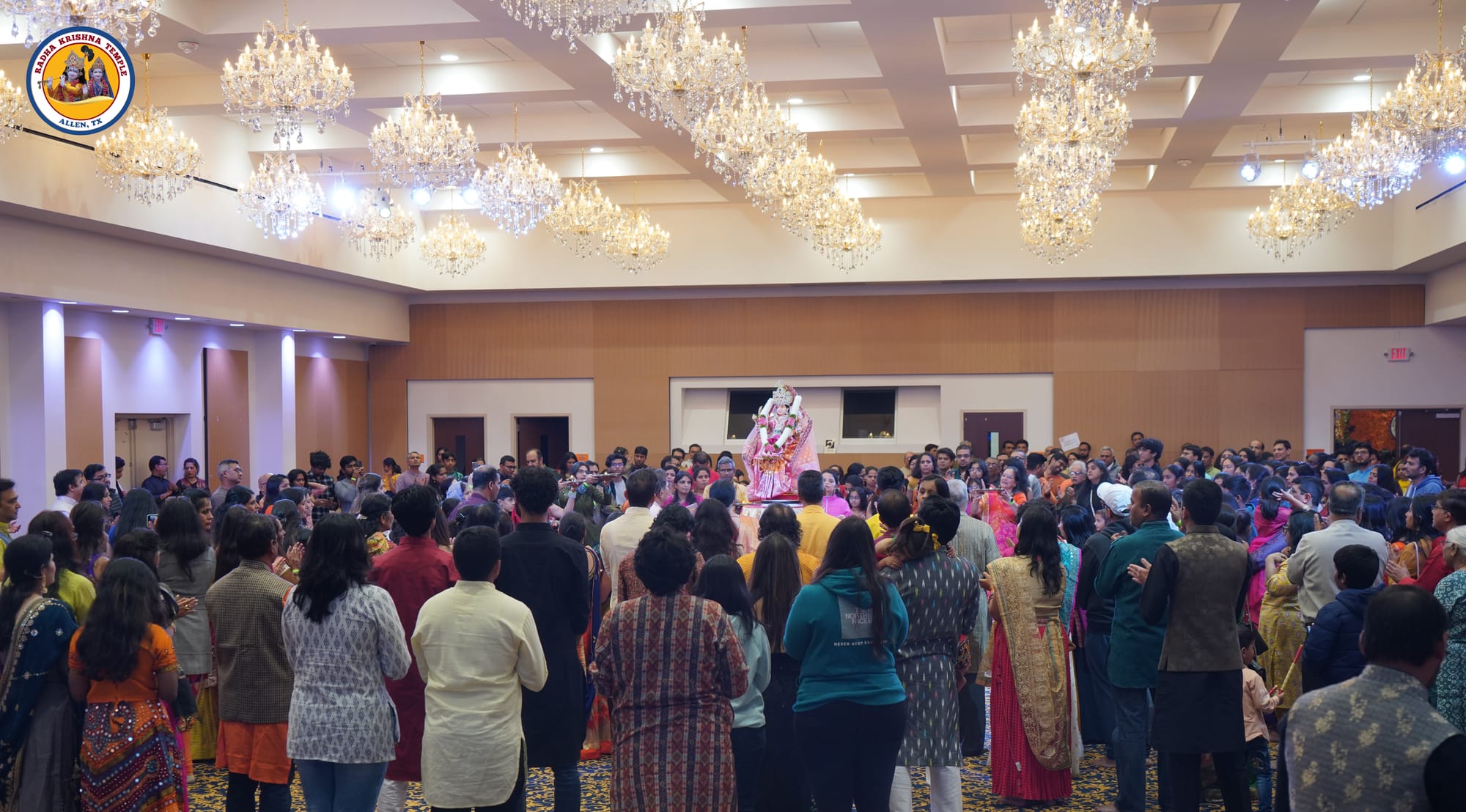
Festivities during the Navratri Mahotsav at Radha Krishna Temple of Dallas
Celebrate Navratri 2024:
This year, join the grand Navratri celebrations at the Radha Krishna Temple of Dallas from October 3rd to 12th, 2024. Festivities will include Garba, Ghatsthapana, Mata Ki Chowki, Food Festival, Durgashtami and many more activities to relish with your family.

